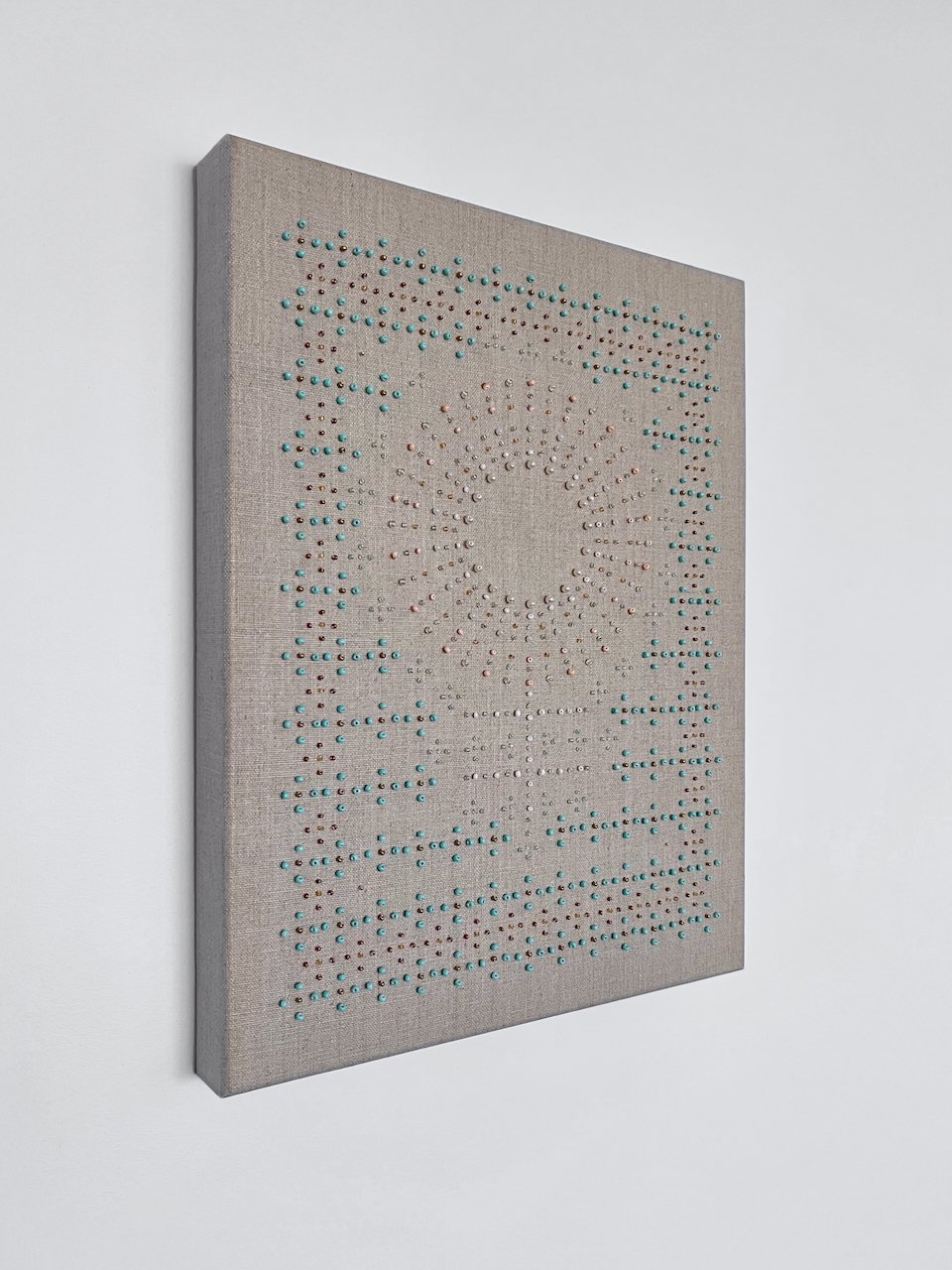štitovi
Sicanje, also known as bocanje, is an ancient tattooing tradition originating in the Balkans, particularly among Roman Catholic Croatians in central Bosnia and Herzegovina and parts of Dalmatia in Croatia. It is believed to originate with the Illyrian tribes of the Bronze Age over 3,000 years ago. By the Ottoman period (15th to 19th centuries), Catholic women and sometimes men tattooed themselves with Christian symbols to mark their faith and deter abduction or forced conversion by Ottoman forces. The tradition faded in the mid-20th century under modernisation and socialist rule but is now experiencing a revival as a celebration of cultural heritage.
Štitovi (shields) were developed by Novak to help support the revival of this ancient practice. Materials are hand-stitched to surfaces using needles, just as natural pigments were tattooed using needles on the skin. Novak applies a queer lens to the work by expanding traditional symbols of protection into newly formed queer symbols of protection. The works become modern shields against discrimination, hate, and violence towards queer communities.
Each work exists in two modes: vanjski (external) mode under soft light and unutarnji (internal) mode under hard light. Hard light casts the work into greater relief just as the and breadth and depth of queer communities is revealed when challenged.















